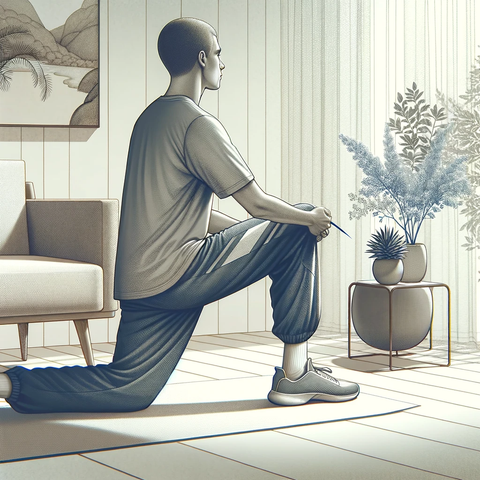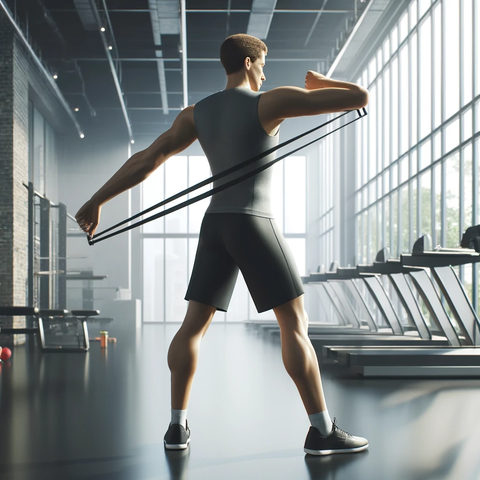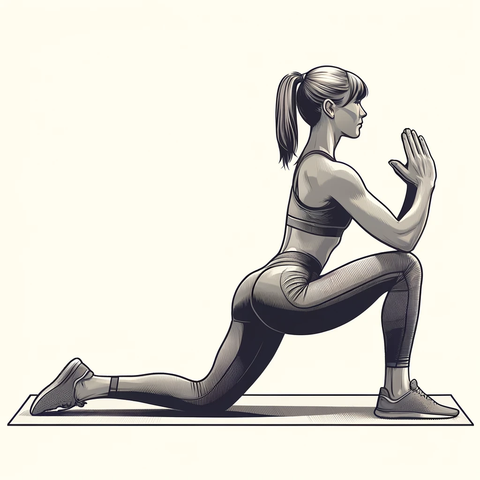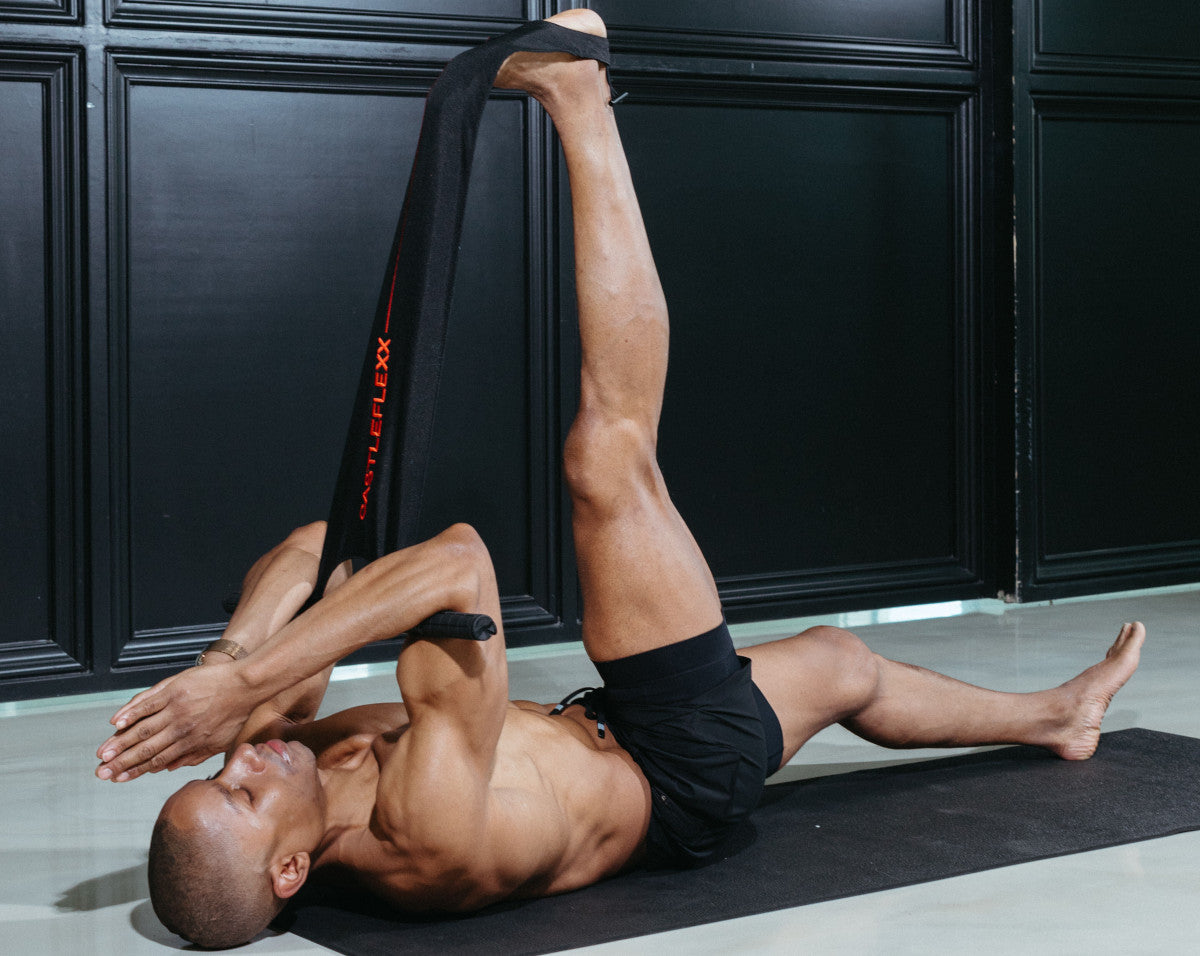Contents (Jump to a section)
What is the Impact of Age on Flexibility? Tips for Maintaining Flexibility as You Age

Like it or not, aging is a natural part of life. Our bodies undergo significant changes as we age, affecting everything from our hormones to our skin. One of the aspects of our health that is affected by age is our flexibility.
Flexibility plays a pivotal role in maintaining our overall physical health and well-being. However, as we age, we often notice a decline in our flexibility. This leads to reduced mobility, increased risk of injuries, and a potential impact on our quality of life.
So, exactly what is the impact of age on flexibility? Can you increase flexibility at any age? Understanding the intricate relationship between flexibility and age helps us stay as fit and healthy as possible as we age.
Today, we dive into the link between flexibility and age, exploring its effects on the body, and providing some simple, practical tips for maintaining flexibility as you age.
First, Here’s What We Mean When Discussing “Flexibility”
Before we discuss maintaining flexibility as you age, let’s take a step back and talk about exactly what we mean by flexibility. Understanding the concept of flexibility and its significance in maintaining our overall health is essential before we explore the link between flexibility and age.
Definition of Flexibility
Flexibility can be defined as the ability of our muscles and tendons to elongate or stretch, enabling our joints to move through their full range without pain or discomfort. It involves adapting and adjusting to various movements, which can be influenced by muscle length, joint structure, and the elasticity of connective tissues.
Flexibility is not a one-size-fits-all attribute; it varies from person to person based on their individual physiology, daily activities, and exercise routines. While some people are naturally more flexible, others may require training to become more supple.
Why Flexibility is Important
Flexibility directly affects the range of motion around our joints. With better flexibility, we can perform a broader range of movements, making everyday tasks more manageable and reducing the risk of joint-related injuries. Tight and inflexible muscles are more prone to strains, sprains, and tears. By enhancing flexibility, we can lower the risk of injuries during physical activities and workouts.
Flexible muscles also promote better posture by helping maintain proper alignment and reducing stress on the spine and surrounding structures. Increased flexibility can also improve athletic performance in many different sports and activities, and can relieve aches and pains often associated with stiffness in muscles and joints. What is the impact of age on flexibility? Let’s discuss that next.
What is the Impact of Age on Flexibility?

Understanding how age impacts flexibility is crucial to developing a proactive approach to maintaining optimal physical function and overall well-being. So, what is the impact of age on flexibility? Let’s take a look at how flexibility and age are linked.
Does Flexibility Decrease With Age?
Yes, flexibility does tend to decrease with age. As we grow older, our muscles gradually lose their elasticity, and the connective tissues become less pliable. This natural decline in flexibility can lead to stiffness and reduced range of motion in our joints. So, what is the impact of age on flexibility? While age generally leads to decreased flexibility, that doesn’t need to be the case. So why does flexibility decrease with age?
Why Does Flexibility Decrease With Age?
What is the impact of age on flexibility, and why does flexibility decrease with age? There are several factors that contribute to losing flexibility with age:
- Loss of muscle elasticity: Collagen, a key protein in our connective tissues, undergoes changes with age, leading to decreased muscle elasticity and flexibility.
- Joint stiffness: As we age, the synovial fluid that lubricates our joints may decrease, causing joints to become stiffer and less mobile.
- Sedentary lifestyle: A lack of physical activity can accelerate the decline in flexibility. Without regular movement and stretching, muscles can become tight and shortened over time.
- Inactivity of connective tissues: Reduced physical activity can also lead to a decrease in the production of synovial fluid and the activity of fibroblasts, the cells responsible for maintaining the elasticity of connective tissues.
At Which Age Does Flexibility Peak?
Given that flexibility decreases with age, at which age does flexibility peak? Flexibility tends to peak during childhood and adolescence. Children generally have greater flexibility than adults due to their developing musculoskeletal system and higher levels of physical activity.
However, there is no fixed age at which flexibility reaches its peak, as individual factors such as genetics, lifestyle, and physical activity levels all play significant roles in determining one's peak flexibility and losing flexibility with age.
Can You Increase Flexibility at Any Age?
Although the link between flexibility and age isn’t usually a positive one, the good news is that you can improve your flexibility at any age. So, how can you increase flexibility at any age?
Using targeted stretching exercises consistently can yield noticeable results. Our bodies have an impressive capacity for adapting, and with patience and dedication, flexibility can be enhanced even in our later stages of life.
How Flexible Should I Be For My Age?
There are no rigid standards for flexibility that apply to everyone, as individual flexibility can vary widely based on genetics, physical activity levels, and other factors. Instead of focusing on specific benchmarks, it’s more important to aim for functional flexibility that allows you to perform daily activities and tasks with ease and minimal discomfort. Learning how to stay flexible as you age can prevent injury and improve your overall health.
How to Stay Flexible As You Age: Tips for Maintaining Flexibility As You Age to Prevent Pain, Immobility, and Injury

As we navigate the journey of aging, it becomes more difficult but also more important to maintain our flexibility. It helps us not only prevent pain and injury, but also contributes to better mobility, balance, and our overall health. Here’s how to stay flexible as you age.
Regular and Targeted Stretching
Incorporating regular stretching exercises into your daily routine is one of the best ways to maintain and improve your flexibility. Dynamic stretching before physical activities can help warm up muscles and prepare them for movement, while static stretching after workouts or as a separate session can help lengthen muscles and improve your overall flexibility.
Focus on stretching major muscle groups, such as hamstrings, quadriceps, calves, shoulders, and hip flexors. Ankle mobility exercises, learning how to stretch glutes and hamstrings, and understanding how to get better hip mobility can all also help improve your flexibility. Remember to breathe deeply and never force a stretch beyond your comfort level.
Using CastleFlexx for Optimized Stretching
While stretching on your own can yield good results, the assisted stretching benefits are even greater. Using specially-designed flexibility equipment like the CastleFlexx, you can enjoy the incredible benefits of fascial stretch therapy at home, without the need for expensive visits to a physical therapist.
The CastleFlexx is among the best stretching equipment for at-home use because it’s uniquely designed to target the entire posterior chain of the lower limb. It relieves tension across your entire body and allows for passive and active full-body stretching. How long does it take to become flexible with CastleFlexx? Not long, and it’s a great tool to prevent you losing flexibility with age.
As well as offering both upper and lower-body stretching, the CastleFlexx is small and lightweight, perfect for throwing in your gym bag for stretching on the go. If you’re wondering how to stay flexible as you age, the CastleFlexx is a wonderful tool to help you along the way. It can also be used for stretches for shin splints and faster shin splint recovery, reducing your Achilles recovery time, and releasing tight calves knee pain.
Strength Training for Flexibility
Strength training not only helps build muscle mass but can also enhance flexibility when performed with proper technique and range of motion. Engage in exercises that challenge your muscles through their full range, such as squats, lunges, and deadlifts. At the same time, consider incorporating yoga or Pilates into your routine, as these practices combine strength training with stretching, promoting flexibility and balance.
Diet and Hydration: The Building Blocks of Flexibility
Maintaining a balanced and nutrient-rich diet is vital for supporting overall joint health and maintaining flexibility as you age. Adequate protein intake supports muscle recovery and repair, while vitamins and minerals contribute to connective tissue health.
Omega-3 fatty acids, found in fish, flaxseeds, and chia seeds, can also help reduce inflammation and support joint function. Staying hydrated is equally essential, as water aids in maintaining the elasticity of connective tissues and lubricating joints.
Rest and Recovery: Essential Components for Maintaining Flexibility
Particularly when it comes to flexibility and age, giving your body ample time to rest and recover is crucial for preserving flexibility and preventing overuse injuries. Make sure you get enough sleep each night, as this is when your body repairs and rejuvenates itself.
When engaging in physical activities, listen to your body and avoid pushing yourself to the point of exhaustion. Incorporate rest days into your workout schedule to allow your muscles and connective tissues to recover fully. This is essential not just for your flexibility, but also to recover from injuries or issues like tight glutes or back pain.
If you’re wondering how to release tight calves, how to fix tight hamstrings, or how long to heal plantar fasciitis, giving your body time to rest and recover is an important first step.
Stretching exercices for beginners over 50
Before starting any new exercise routine, it's advisable to consult with a healthcare provider, especially if you have any pre-existing health conditions.
Glute stretch wave

Deepen the stretch in the glute by exhaling while bringing the chest down to the knee. Enhance the stretch in the hip flexor of the opposite leg by 'walking' the upper body away from the legs. Take it to the next level by dropping down to the elbow and reaching over the head with the opposite arm, targeting the fascia through the back, hip, and into the leg.
Upper back rotation

Exhaling as the arm is lowering towards the ground and the chest is fully open. Keep the top leg as straight out as you can (as a counter weight) to allow maximum rotation during the stretch. Allow the head to rotate with the body.
"Shoulder Backpack" stretch

Relax the shoulder and let the band pull it backward. Look in the opposite direction of the band, scanning the area by moving the head in different directions. To target the upper trap (between the neck and shoulder), tuck the chin inward during the stretch.
Classic Calf stretch with a twist

Point the feet straight forward, directly at the wall. Deepen the calf stretch by driving the hips forward. Target various areas of the calf by shifting the hips side to side.
Overhead Band Stretches

Take a substantial step back, lowering the chest towards the ground while letting the shoulder and arm relax. Rotate the torso to either side to focus on various muscles around the shoulder. Enhance the stretch by gently rocking forward and backward.
Kneeling Hip Flexor Stretch

Maintain shoulders back and concentrate on pushing the hips forward. Intensify the stretch by keeping tension in your abdomen and engaging your glutes. Utilize the same-side arm to reach up and over the head toward the opposite wall, extending the stretch down the side of the back and hip.
Closing Thoughts on Flexibility and Age
So, what is the impact of age on flexibility? While flexibility generally decreases with age, that doesn’t have to be the case. In fact, you can even improve your flexibility as you age with a combination of the right stretches, exercises, and rest. Using the CastleFlexx can make your stretches more effective than ever, improving your flexibility slowly but surely with each use.
At which age does flexibility peak? To a certain extent, your destiny is in your hands! With the CastleFlexx, you can easily improve your flexibility, even as you age. The CastleFlexx is an affordable, simple way to improve your flexibility, recover from injury, and enjoy a full-body workout. Remember, boosting your flexibility reduces your injury risk and improves your athletic performance, so it’s worth the effort.
Prioritize your wellness and improve your flexibility by revolutionizing the way you stretch. Order your CastleFlexx today!
